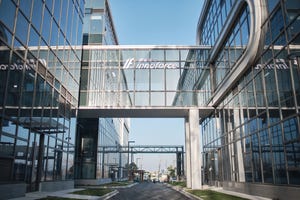
A report by BCC Research titled SUTs for Biopharmaceuticals: Global Markets has revealed a promising outlook for the sector, suggesting a compound annual growth rate (CAGR) of 11.6% from 2024 to 2029. SUTs include disposable equipment used in drug production processes.
At BPI West in March 2023, Joe Hess, senior director of environmental health, safety, and sustainability at Gilead Sciences, lauded SUTs for its sustainability and efficiency and said, “they are better from a safety standpoint as they require less storage space, less cleaning” and employees are not exposed to as many chemicals.
In 2023, the market size stood at $5.8 billion, reaching $6.5 billion by the end of 2024. The market will continue to expand, with estimates placing its size at $7.26 billion in 2025, $8.11 billion in 2026, and $9.05 billion in 2027, the report claims. By 2028, the market is anticipated to hit $10.1 billion, ultimately reaching $11.2 billion by the end of 2029.
The increasing demand for high-quality, cost-effective, and efficient production solutions has driven growing reliance on SUTs across various biopharma sectors, the report concluded.
Major factors of growth
As treatments become increasingly tailored to individual genetic profiles, a major driver is the growing demand for personalized medicine. The steady flow of new products entering the market, propelled by artificial intelligence (AI) and automation in drug production methods, represents another significant growth factor.
Furthermore, demand for SUTs is directly related to the continued presence of monoclonal antibodies (mAbs) in company pipelines as single-use is now part-and-parcel with the modality. Single-use systems in downstream operations can help optimize the final stages of drug production by reducing the need for the complex cleaning and sterilization procedures traditionally required for reusable equipment, contributing to their sustainability and efficiency.
Regional market insights
The report also provided an analysis of regional market performance. North America held the largest market share in 2023. The region continued to be a dominant player throughout the forecast period, benefiting from robust pharmaceutical infrastructure, significant R&D investments, and strong government support.
This was followed by Europe, with major contributors including Germany, the UK, and France, which saw steady growth in single-use technology adoption.
Furthermore, countries such as China and India in the Asia-Pacific region are expected to grow due to the rising demand for affordable healthcare solutions, an expanding biopharma industry, and increasing investments in biopharmaceutical-production capabilities.
Other regions, such as South America, the Middle East, and Africa, also showed a modest but improving growth trajectory, although they hold a smaller market share compared with the major players.
About the Author
You May Also Like








